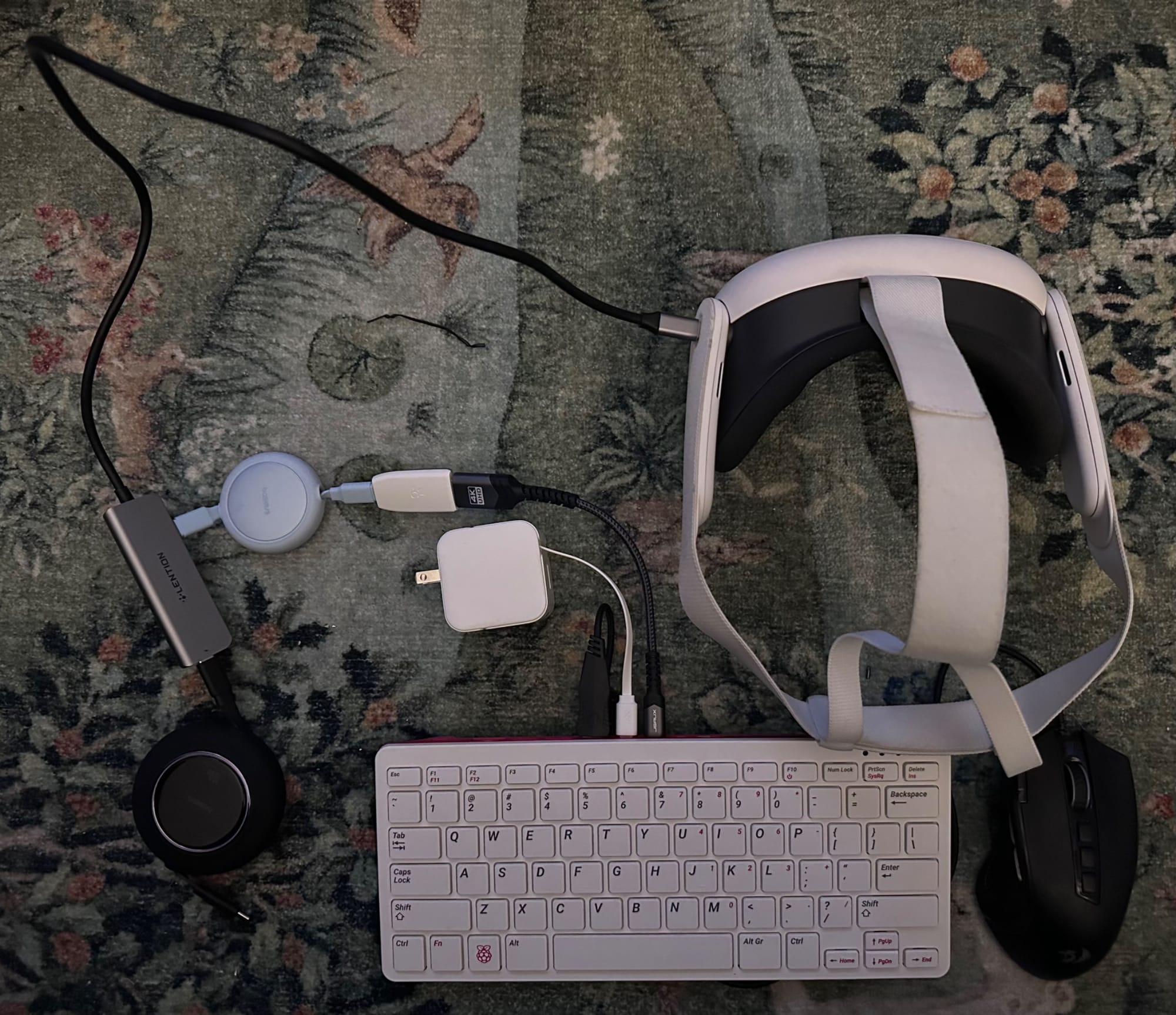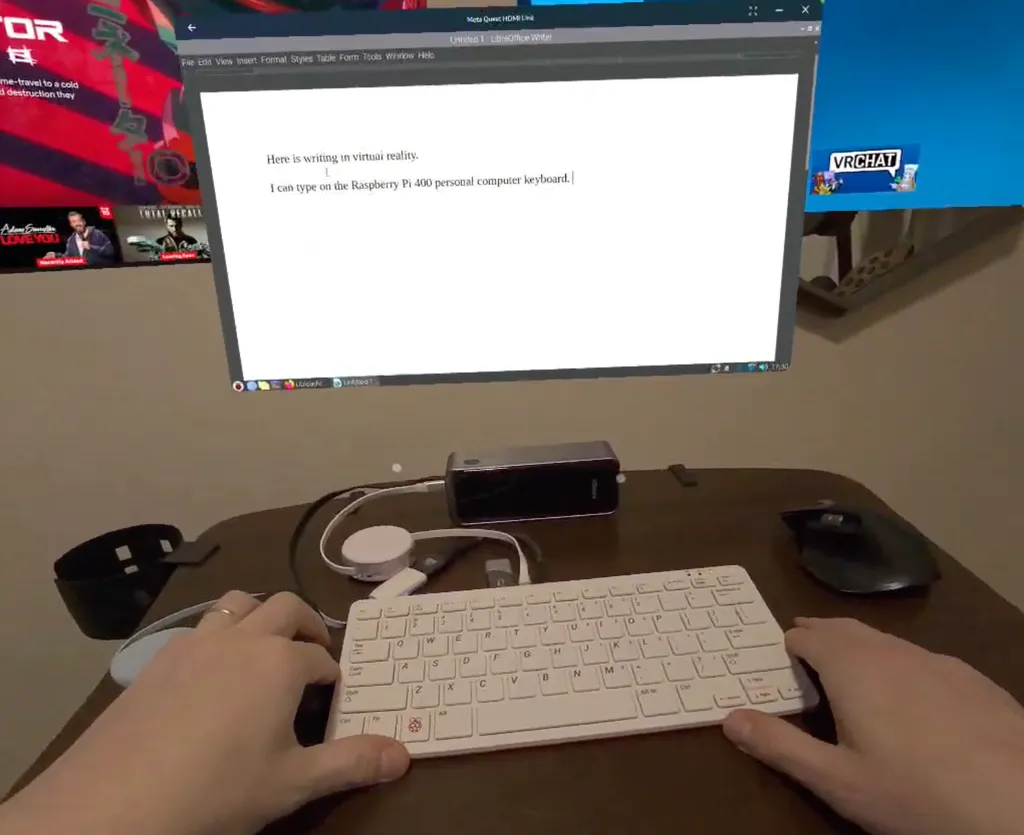A PC built into a keyboard without a display, like the Raspberry Pi 400, starts making a lot of sense with Meta Quest HDMI Link running on the most popular standalone VR headsets.
The Raspberry Pi 400 is a roughly $70-$100 keyboard with a Raspberry Pi 4 PC inside. The keyboard PC features a pair of Micro HDMI ports for display, a USB-C port for power in and three USB-A ports for attached devices.
Paired with a VR headset like Quest 3, I've used retractable USB-C cables to make the connections more manageable between keyboard, power, and headset. The setup is completed with a mess of USB hubs, micro HDMI to HDMI adapter and a Shadowcast 2 capture card.
Modularity Is Back On The Menu
My particular system also features a 1 terabyte MicroSD card powering a standard Raspberry Pi Linux distribution. I could simply swap out the memory card, though, to put away my desktop with its draft written-in-VR stories, and replace it with a Retropie gaming system running backups of my vintage cartridge collection. Or I could put in a different card tailored to be a theater powered by Kodi.

You could, of course, do this all with a Steam Deck and more with the decktop keyboard I wrote about last week. You can enjoy all those great Steam Deck-verified titles on the big screen there, and the Discover app on Steam Deck's desktop is an easy-to-use pathway to many abilities the open source community adds on an ongoing basis.
If you were born after the year 2000, there's a chance you've only ever known the kind of file management allowed in wiggling apps on an iPhone, or in the automatically tracked changes of Google Docs, or in the reminders to delete photos or videos from a device with limited storage.
Raspberry Pi used like this offers an introductory course to the basics of personal computing starting from an open source Linux operating system you put on a microSD card in a keyboard PC, and sees you extending the desktop it shows to a 1080p display that just happens to be a VR headset.
Keyboard PCs For VR Headsets & AR Glasses
An optimized keyboard PC with integrated capture cards would be a pretty amazing addition to a standalone VR headset. It could have at least one HDMI output and one HDMI input to pass up through a USB-C cable to any connected display device, including Quest 3 with Meta Quest HDMI Link.
An integrated trackpad would be a great addition to such a headless portable computer, as would optional bluetooth control of other nearby devices, or optional wireless casting and AirPlay. Switching between command of the keyboard PC's desktop, the VR headset, and a captured HDMI device, like a Steam Deck on a charging dock, should be as easy as the press of a button. It's already that easy on some Logitech keyboards, some of which are also trackable objects for Quest headsets.
An additional USB input or two for connecting more storage, a mouse or other devices would be incredibly useful as well. The Raspberry Pi 400, which is as old as the Quest 2, offers three usable USB-A ports and 4 gigabytes of RAM.
A hypothetical Raspberry Pi 500 built on the newer model computer could superpower this whole idea with an integrated slot for high-speed NVMe storage.
HTC has accepted HDMI in with some of its headsets for quite some time, but with recent updates to Meta's Horizon OS and apps like Quest HDMI Link and Steam Link, Quest standalone VR headsets are now properly becoming general purpose portable personal computers. Users are already using the integrated display system to control drones, RC cars, as well as other computers in the immediate vicinity, while never leaving their VR experience.
Keyboard PCs show a lot of potential when combined with the expected lower prices on a forthcoming Quest 3S, as well as the prospect of more software updates planned by Meta to keep pace with Apple and others. Keyboard PCs can bring your files to any display device you want. If you combine that idea with general purpose standalone VR headsets, it becomes much easier to imagine people using headsets in places like cafes or libraries.






























